Ever felt like your ads are just floating around the internet, doing nothing? You spend money. You post ads. But you don’t really know what’s working. That’s like pouring water into a bucket with holes. In today’s world, guessing doesn’t help. You need clear results. You need data. And that’s where performance marketing steps in.
In simpler words, you only pay for what works. Clicks, Leads & Sales. No more wasting money on ads that don’t perform. Every rupee goes toward real results. That’s why performance marketing is becoming so popular, and performance marketing agencies like BrandLoom can help you out.
If you run an eCommerce brand, a startup, or a B2B company, this blog is for you. Even if you’re running an online marketing agency and starting at the basic level, you’ll find this useful.
We’ll explain what performance marketing really means. We’ll cover the platforms you can use, the steps to get started, and how to track your success.
What is Performance Marketing? Understanding the Basics
Performance marketing is an online advertising strategy where you only pay when you get results. That could be a click, a lead, or a sale. Not just for showing your ad, and not for guessing. Just real action.
It’s a smart way to run digital marketing ads. Instead of spending money and hoping it works, you track what works and pay only for that.
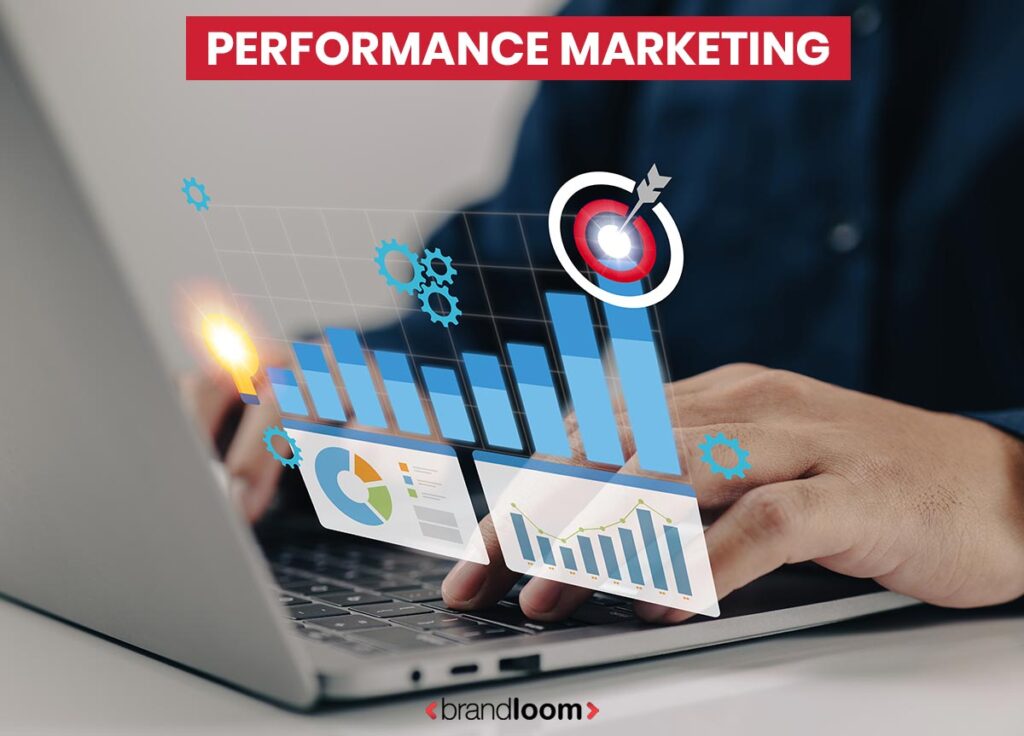
Here’s how it goes. You partner with a performance marketing agency like BrandLoom. The performance marketing company places your ads on platforms like Google, Facebook, Instagram, or even websites. Then they track how people react.
You pay only when your goal is reached. That goal could be anything you choose, like getting more website visits, more sales, or more sign-ups.
So, every rupee you spend brings value. That’s why performance marketing is growing fast. It’s perfect for anyone who wants results, not just reach.
How Does Performance Marketing Work?
Here are the main ways brands pay according to a smart performance marketing strategy:
1. Cost Per Click (CPC)
You pay only when someone clicks your ad. This performance marketing strategy helps drive traffic to your site fast. It’s great for getting more visits and checking what catches people’s attention.
2. Cost Per Impression (CPM)
This is about views. CPM means cost per thousand views. So if 10,000 people see your ad, you pay for those views. It’s useful when your goal is brand awareness and reach.
3. Cost Per Sale (CPS)
This one is simple. You only pay when someone makes a purchase. It’s often used in affiliate marketing. For many brands, this is the heart of their performance marketing strategy—paying only when money comes in.
4. Cost Per Lead (CPL)
Want someone to sign up for your newsletter or fill out a form? With CPL, you pay when a lead is collected. These leads can later turn into paying customers. This is one of the most popular goals in performance marketing tools today.
5. Cost Per Acquisition (CPA)
CPA is a bit wider. You pay when someone does a specific thing, maybe buys, signs up, or even downloads an app. It’s a flexible model used in many performance marketing tools and platforms.
Each method has a purpose. The best performance marketing strategy is the one that matches your goals.
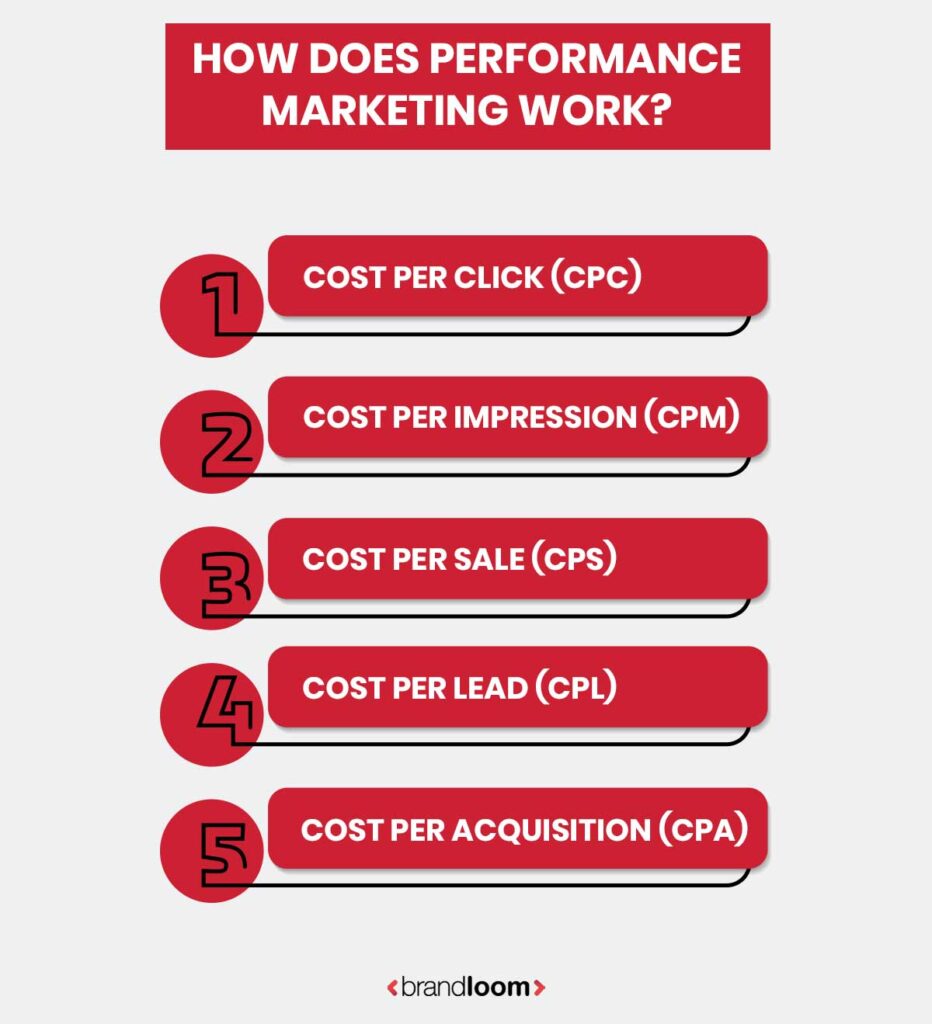
Who Makes Performance Marketing Happen?
Performance-based marketing doesn’t run on its own. Behind every winning campaign, there are four key players working together. Let’s see who they are and what they do.
1. Retailers
These are the brands or companies that want to promote their products. They create goals for the campaign, for example, like more sales or leads, and work with publishers to achieve them. Once a goal is met, they pay.
If a business wants to grow online fast, performance ads are a smart choice. Many top retailers work with a performance marketing agency in India to manage campaigns across different platforms.
To get the best out of performance-based marketing, the retailer’s website should already convert visitors into customers. Then, when publishers send traffic, the results come faster.
2. Affiliates
Affiliates are partners who help brands reach more people. They can be bloggers, coupon websites, YouTubers, influencers, or even mobile app owners. Their job is to drive traffic, bring leads, and push sales.
They promote the brand through reviews, videos, or social media posts. In return, they get paid when their work leads to results. This win-win setup is why performance advertising keeps growing.
Brands must also support these partners with good tools, clear instructions, and timely payments to keep things running smoothly.
3. Affiliate Networks and Tracking Platforms
This is the tech side of the system. These platforms provide banners, links, data reports, and everything else that keeps the campaign organized. They also help track how performance marketing services are doing.
Want to know if a link got clicks or sales? These platforms show it all. Some top names in this space are Partnerize and Rakuten Advertising.
They act like the control room where brands and publishers meet, set goals, and check results.
4. Affiliate Managers or OPMs
These are the people who handle day-to-day operations. They talk to affiliates, solve problems, and keep things on track.
A brand can hire them in-house or partner with a performance marketing agency in India. These experts already know what works, have the tools, and bring in trusted affiliates.
Before hiring an agency, brands should decide their budget, timeline, and what they want to achieve. This makes the whole process faster and more effective.
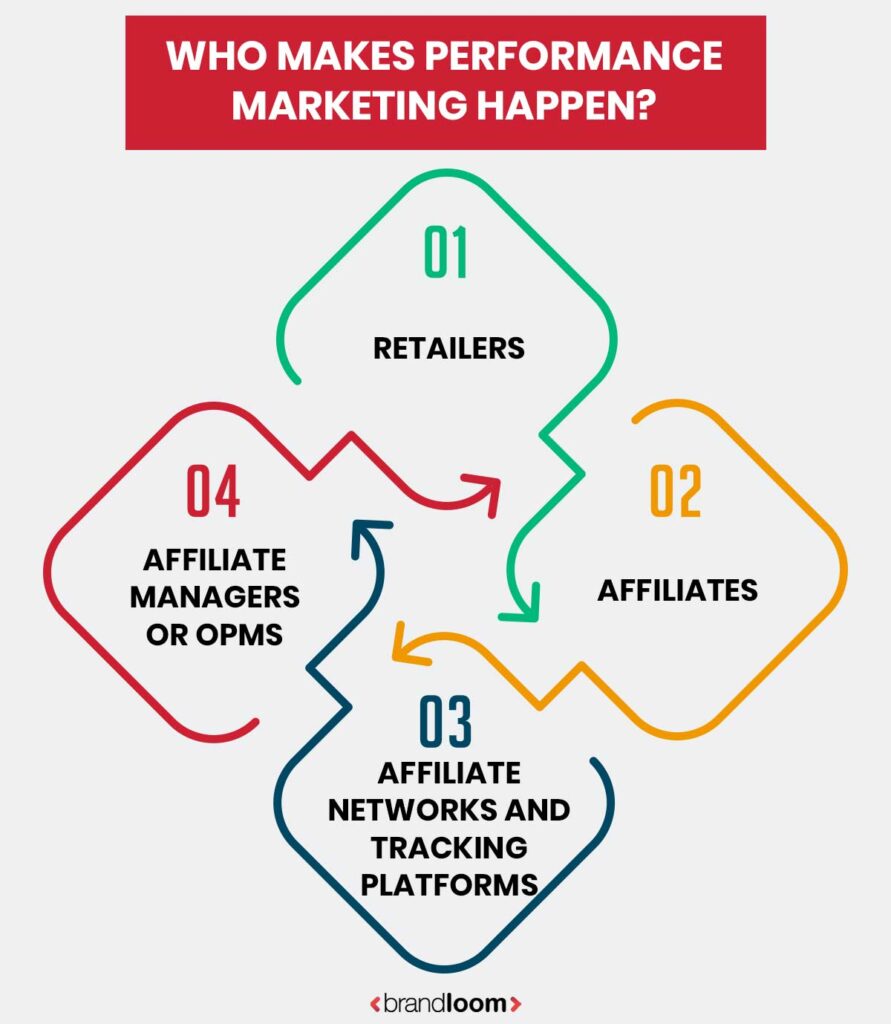
How Affiliate Marketing is Related to Performance Marketing
Affiliate marketing is just one part of the bigger picture. To keep it simple, it falls under the wide umbrella of performance marketing.
Let’s break it down. In affiliate marketing, someone promotes a product and earns money when it sells. They use a special link to track who buys. If someone clicks that link and makes a purchase, the affiliate gets paid. That’s their reward.
But the performance marketing meaning is different. It covers more than just sales through links. It also includes email campaigns, influencer posts, and search ads—basically all kinds of marketing where you pay only when you get a result.
So while affiliate marketing focuses on sales, performance marketing companies focus on results. And those results could be anything like clicks, leads, app installs, or form fills. The brand pays when that action is done.
Performance Marketing vs Brand Marketing: What’s the Difference?
Before we go further, let’s clear this up. Performance marketing and brand marketing are not the same. They serve different goals, and both are important.
In performance marketing, you get fast results. You also pay only when those actions happen. That’s why many businesses love it. They can see the numbers and tweak their ads in real time.
For example, if your ad gets 500 clicks and 50 sales, you’ll know right away. You can then improve or stop the campaign. These are clear performance marketing examples. You run a Facebook ad to drive app installs. Or you use Google Ads to get leads for your webinar.
On the other hand, brand marketing is slower but deeper. It’s about how people feel about your brand. You’re not chasing clicks, but you’re building trust.
Good brand marketing helps people remember you, like you, and believe in what you stand for. It shows your values. It tells your story. And over time, it creates loyal customers.
A strong brand builds a base. Performance marketing services help you grow quickly by converting that brand trust into action.
Why Choose Performance Marketing? Here’s What You Gain
If you’re still wondering why so many brands are shifting their focus, here’s the answer: Performance marketing brings real, fast, and trackable growth. In a world full of clicks and scrolls, it helps you focus on what matters: results.
Here’s why your business should use it:
1. Stronger Brand Reach with Performance Marketing
When you work with affiliates, influencers, or a performance digital agency, you instantly tap into new audiences. These partners already have loyal followers. Your brand gets noticed by people who might never have found you otherwise. That boosts your traffic and awareness—fast.
2. Clear and Trackable Results with Performance Marketing
This is a game-changer. You can track every step. From the first ad view to the final sale, performance marketing lets you see what’s working. You don’t need to guess. You know which ad, partner, or channel brought you the best return.
3. Low Risk, High Reward with Performance Marketing
You only pay when a user takes the action you want – click, sign-up, or buy. That means lower costs and higher ROI. You’re not wasting money on ads that don’t perform. Compared to other types of campaigns, it’s a safer investment.
4. Better Budget Control with Performance Marketing
With performance marketing, you can set clear limits. You decide how much you want to pay per click, lead, or sale. That makes it easier to manage your spending and test different strategies without going over budget.
5. Quick to Test and Scale with Performance Marketing
Want to try a new market? Launch a new product? Run a time-limited offer? Performance digital campaigns can go live fast. And if they work, you scale them. If not, you pause or tweak without heavy losses.
6. Works Well With Brand Marketing with Performance Marketing
This is important. It’s not about brand vs performance marketing – you don’t have to choose. They work best together. While brand marketing builds trust and long-term loyalty, performance marketing brings in sales right now. The best brands use both to grow and stay ahead.
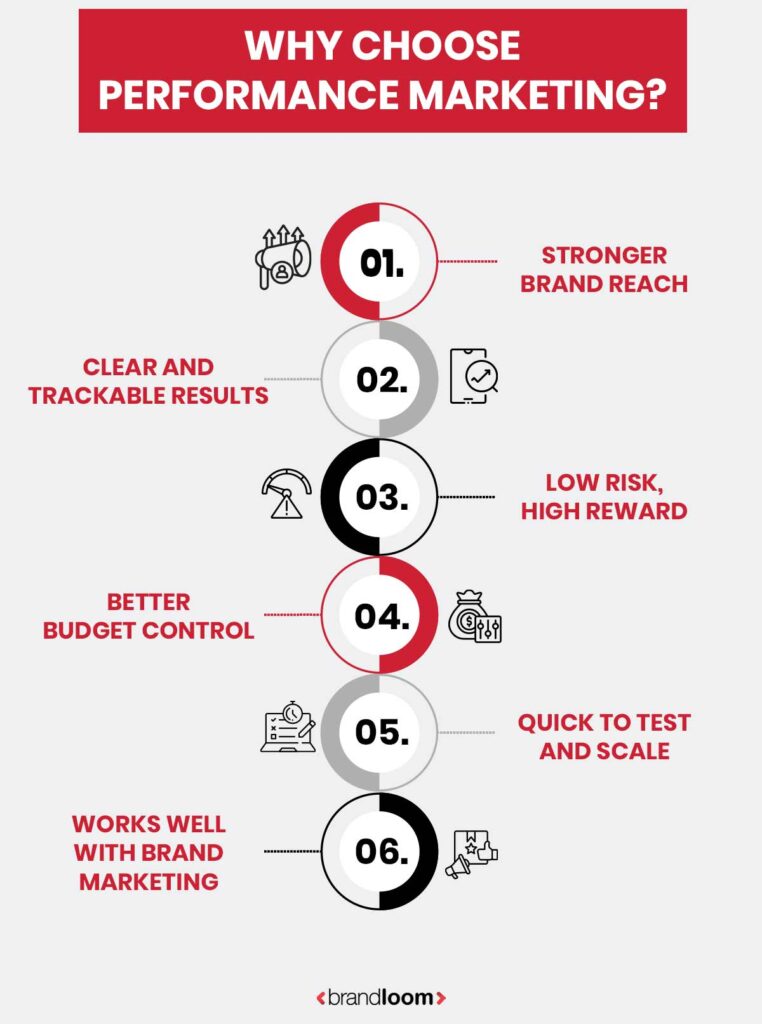
Top Performance Marketing Channels You Should Know
Let’s break down the most-used performance marketing channels today. These are where most brands go to get fast, trackable results.
1. Paid Search
Ever searched for something on Google and seen the first few results labeled as “Sponsored”? That’s paid search. These are ads businesses run through platforms like Google Ads.
Here’s how it works: you pick a keyword, create an ad, and pay only when someone clicks or takes action. For example, a bakery in Delhi might run an ad for “custom birthday cakes.” They don’t pay unless someone clicks or places an order. This makes tracking campaign performance simple.
2. Social Media Advertising
Facebook, Instagram, LinkedIn, and others let you run targeted ads. You can aim at users by age, city, interests, or habits.
Let’s say you own a vegan cafe in Bangalore. You can run Instagram ads to reach students and young professionals nearby who follow vegan food pages. You only pay if they click your ad or take another defined action. That’s smart campaign performance tracking in action.
3. Native Advertising
These are ads that look like regular content. You might have seen “sponsored stories” on news sites or suggested articles at the bottom of a blog. They blend in with the platform and don’t interrupt the reader.
Platforms like Taboola or Outbrain help place these kinds of ads. For example, a travel gear brand might place an article called “Top Travel Essentials for 2025” on a travel blog. It looks like a story, but it’s really an ad.
4. Affiliate Marketing
You already know this one. A blogger, YouTuber, or influencer promotes your product using a special link. They get paid only when someone buys through that link.
This method has low risk and high reward. You don’t spend anything until a sale happens. That’s why it’s one of the most used performance marketing channels.
5. Email Marketing
Usually, you pay a flat monthly fee for email tools like Mailchimp. But in performance marketing, you work with a partner who sends the emails and only gets paid when a sale happens.
Let’s say an affiliate sends a mail blast promoting your new course. You don’t pay anything unless someone signs up. This way, you get new customers without upfront spending.
6. Influencer Marketing
This one only works well when it’s based on actual performance. That means you pay the influencer only when their content brings in clicks, leads, or sales.
It’s important to choose influencers whose audience matches yours. If they already speak your brand’s language, their followers will trust what they promote.
Each of these performance marketing channels allows you to track actions like clicks, signups, or purchases. That’s what makes campaign performance easy to monitor and improve.

How to Start Performance Marketing (Even If You’re New)
You don’t need a massive budget to begin. You just need a clear path. Here’s a simple, step-by-step guide to kick off your digital performance journey the smart way.
Step 1: Define Success on Your Terms
Don’t chase clicks just for the numbers.
Ask yourself: What do I want? More sign-ups? Purchases? App installs?
This is where you define advertising in marketing terms that matter to your business. Use SMART goals — specific, measurable, achievable, relevant, and time-bound.
Step 2: Pick the Right Performance Marketing Channels
Where does your audience hang out?
If they Google everything — use search ads.
Suppose they scroll all day — try social ads.
If they love blogs and reviews — lean into affiliate marketing.
You don’t need to be everywhere. Start where you’re most likely to win.
Step 3: Set a Budget & KPIs
Pick a realistic number. Even ₹5,000 a month is a start.
Then decide: What will you track?
Cost per click? Cost per lead? Return on ad spend?
Choose the right performance marketing tools to track this — Google Analytics, Facebook Ads Manager, or tools like HubSpot.
Step 4: Launch, Then Keep Tweaking
Put your ads out there. But don’t just set and forget.
Use A/B testing. Change headlines. Try new images.
Your first version won’t be perfect — that’s okay.
Great performance marketing strategy is built on testing, learning, and improving.
Step 5: Get Professional Help
If you’re overwhelmed or want faster results, hire a performance marketing agency like BrandLoom, which businesses trust in India.
They’ll manage the work, give you access to tested systems, and help you scale quicker.
Step 6: Review, Learn, and Scale
After 30 days, check the data.
What worked? What didn’t?
Cut what’s underperforming. Double down on what’s converting.
Track your campaign performance closely and don’t be afraid to shift strategies.
Conclusion
In performance marketing, you only pay when someone takes action, like clicking, signing up, or buying. It’s based on real results and that’s what makes it smart. You see exactly what’s working, where your money goes, and how to improve. No more wasting budget. Just clear numbers, trackable performance, and steady growth. This is marketing built for today. Fast, flexible, and focused on what matters most.
Whether you run a startup, an eCommerce store, or a B2B company, you need a strategy that works harder. That’s where performance marketing fits in. With the right performance marketing strategy and tools, you can test different ideas, learn quickly, and double down on what works. Don’t try to do it all alone. A good performance marketing agency or partner can help you set it up right, track results, and scale fast. You’ll save time, lower risk, and grow smarter. Results are no longer optional; they’re expected. And performance marketing companies are built to deliver exactly that.
Frequently Asked Questions
Performance marketing is a result-driven method in digital marketing where you only pay when someone takes an action, like clicking an ad, signing up, or buying a product.
It’s all about tracking what works and focusing your budget on what brings real results. The biggest benefit is that there is no guesswork and only real results.
You get full control over your spend and can measure everything in real-time. It also lowers risk, improves ROI, and helps scale faster.
For businesses that want to grow smartly, performance marketing gives a clear path to test, learn, and win.
It means you only pay when someone takes action, like clicks, signs up, or buys. So you’re not just spending on views, but on real results.
It helps you track every step and know what’s working. This makes it easy to improve and grow. Since everything is online, you can test, tweak, and get better over time.
It’s smart marketing based on data. If you want a strategy that shows what works and what doesn’t, performance marketing is the way to go.
If you have time, tools, and marketing experience, you can start small yourself. But to scale faster, working with experts helps. Performance marketing agencies in Delhi like BrandLoom bring in strategy, tech, creatives, and experience.
They already know what works across platforms like Google, Meta, or affiliate networks. DIY may work in the beginning, but expert agencies save time, avoid costly mistakes, and deliver better results. If growth is your goal, hiring a trusted agency can give your brand a solid performance push.
Start by setting your goals- what do you want? More leads, sales, or website traffic? Next, pick your platforms: search, social, email, or affiliate. Then set a budget and track everything. Use data to keep improving.
If this sounds tough, that’s where performance marketing agencies in Mumbai like BrandLoom help. They guide you through every step, run your campaigns, and focus on ROI.
Whether you’re a new brand or scaling up, the right partner helps you hit goals faster, without burning money on things that don’t work.
It’s simple: you pay only when something real happens. That could be a sale, a signup, a download, or a click. It’s different from traditional ads, where you pay for space and hope for results.
This model works best when you track and improve regularly. Tools help, but strategy is key. That’s why many brands work with a performance marketing agency in Bangalore like BrandLoom, as they bring a plan, proven systems, and hands-on experts.
You get more from your budget, and a clear view of what’s working.
To improve your digital marketing performance, focus on specific actions that lead to results. Start by creating better landing pages that match your ads and give users clear next steps. Run A/B tests on creatives and similar marketing materials.
Use real-time data to track what’s working and stop what’s not. The biggest wins often come from small tweaks. Don’t forget to retarget users who have already visited your site. Keep refining your audience, message, and offer until things click.
Over time, the benefits of performance marketing become clear – you spend less, but earn more.
Measuring digital marketing performance means tracking actions that matter. Look at click-through rates, conversion rates, and how many people take specific action, like signing up or buying.
Tools like Google Analytics, Meta Ads Manager, and third-party platforms can be helpful. You can also track every step of a performance marketing campaign, from first impression to final sale. What makes this better? Advertisers only pay when they get results.
So, measuring isn’t just helpful, it’s built into the system. Use dashboards to compare weekly or monthly growth, and always tie it back to your business goals.
One of the biggest mistakes in performance marketing is skipping strategy. Many jump in without knowing their target audience, which means wasted money.
Others focus only on clicks, not conversions. A pretty ad is useless if the landing page doesn’t work. Also, poor tracking can kill performance – you can’t improve what you can’t measure. Avoid copying trends blindly. Stick to what suits your business.
And never forget: advertisers only pay when there’s a result, so don’t settle for vanity metrics. Keep testing and tweaking until your campaign works for you.
Right now, native ads and influencer partnerships are growing fast. These look like sponsored content but feel natural to the viewer, so they get better engagement.
AI tools are helping brands run smarter campaigns with real-time decisions. Zero-party data, where users give info voluntarily, is also gaining attention, making targeting more accurate.
Automation is everywhere, but so is the need for better human creativity. And here’s the catch: performance marketing vs affiliate marketing isn’t a debate anymore. Most smart brands use both together for maximum reach and control.
Yes, it’s perfect for them. Since performance marketing pays only when something happens, there’s less risk. Small businesses often don’t have large budgets, so paying for results such as a lead or sale makes sense.
You can start small, test what works, and grow from there. Sponsored posts, retargeting ads, or even partnering with creators all count. With the right performance marketing campaign, even local stores can reach the right target audience.
It’s not just for big brands, it’s for anyone who wants clear results without wasting money.





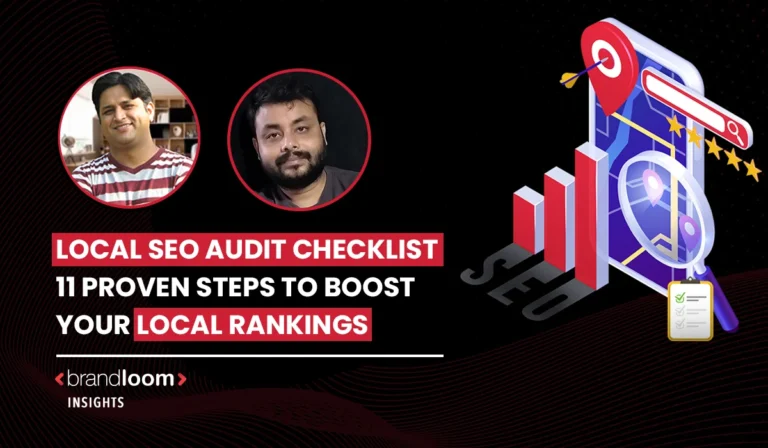
Comments are closed.